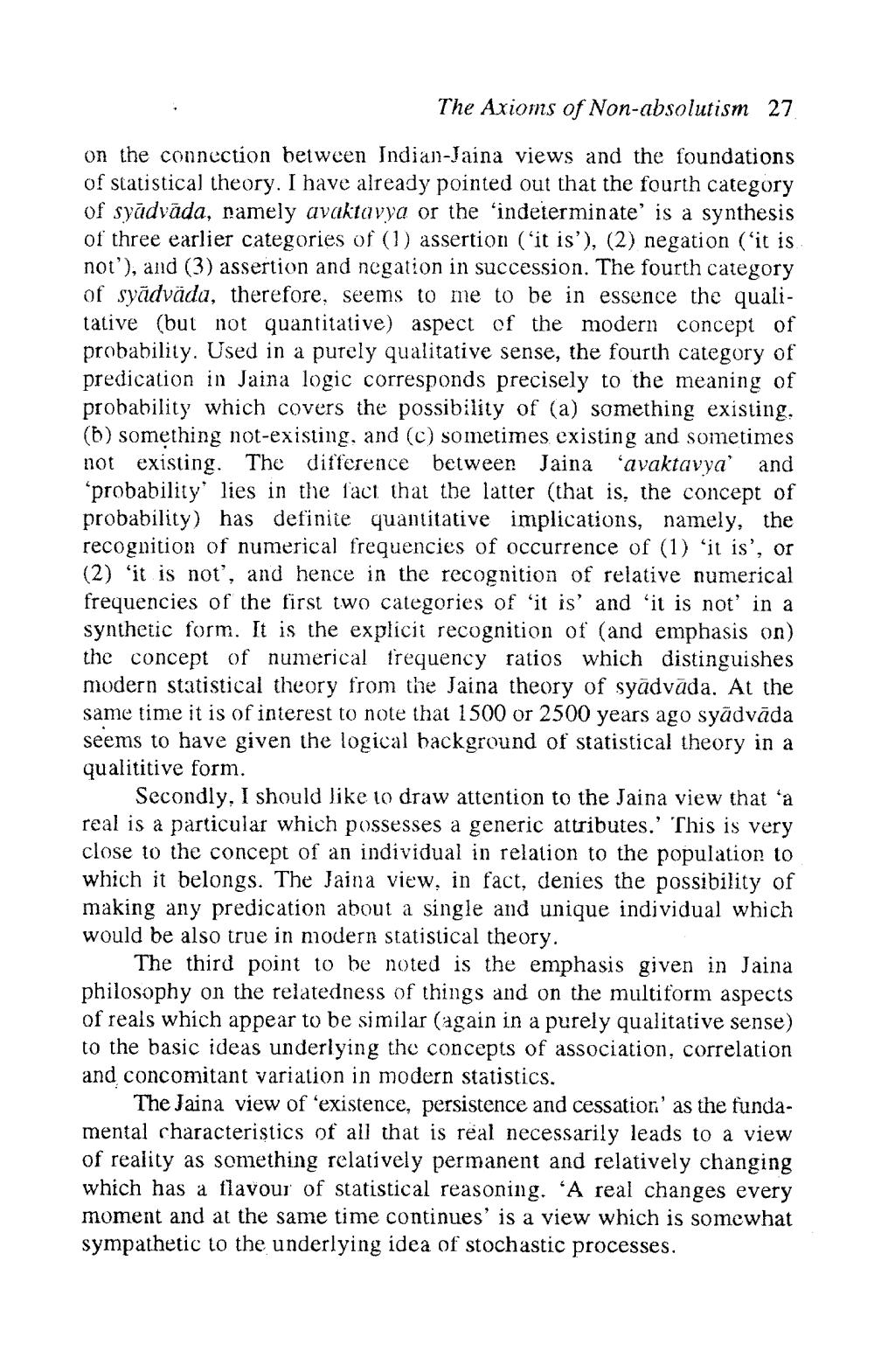________________
The Axioms of Non-absolutism 27
on the connection between Indian-Jaina views and the foundations of statistical theory. I have already pointed out that the fourth category of syādvāda, namely avaktavya or the 'indeterminate' is a synthesis of three earlier categories of (1) assertion ('it is'), (2) negation ('it is not'), and (3) assertion and negation in succession. The fourth category of syödvädu, therefore, seems to me to be in essence the qualitative (but not quantitative) aspect of the modern concept of probability. Used in a purely qualitative sense, the fourth category of predication in Jaina logic corresponds precisely to the meaning of probability which covers the possibility of (a) something existing. (6) something not-existing, and (c) sometimes existing and sometimes not existing. The difference between Jaina avaktavya' and
probability lies in the fact that the latter (that is, the concept of probability) has definite quantitative implications, namely, the recognition of numerical frequencies of occurrence of (1) 'it is', or (2) ‘it is not, and hence in the recognition of relative numerical frequencies of the first two categories of ‘it is' and 'it is not in a synthetic form. It is the explicit recognition of (and emphasis on) the concept of numerical frequency ratios which distinguishes modern statistical theory from the Jaina theory of syādvada. At the same time it is of interest to note that 1500 or 2500 years ago syadvāda seems to have given the logical background of statistical theory in a qualititive form.
Secondly, I should like to draw attention to the Jaina view that 'a real is a particular which possesses a generic attributes.' This is very close to the concept of an individual in relation to the population to which it belongs. The Jaina view, in fact, denies the possibility of making any predication about a single and unique individual which would be also true in modern statistical theory.
The third point to be noted is the emphasis given in Jaina philosophy on the relatedness of things and on the multiform aspects of reals which appear to be similar (again in a purely qualitative sense) to the basic ideas underlying the concepts of association, correlation and concomitant variation in modern statistics.
The Jaina view of existence, persistence and cessatior' as the fundamental characteristics of all that is real necessarily leads to a view of reality as something relatively permanent and relatively changing which has a flavour of statistical reasoning. “A real changes every moment and at the same time continues' is a view which is somewhat sympathetic to the underlying idea of stochastic processes.




